Top 5 Anthurium Care Tips
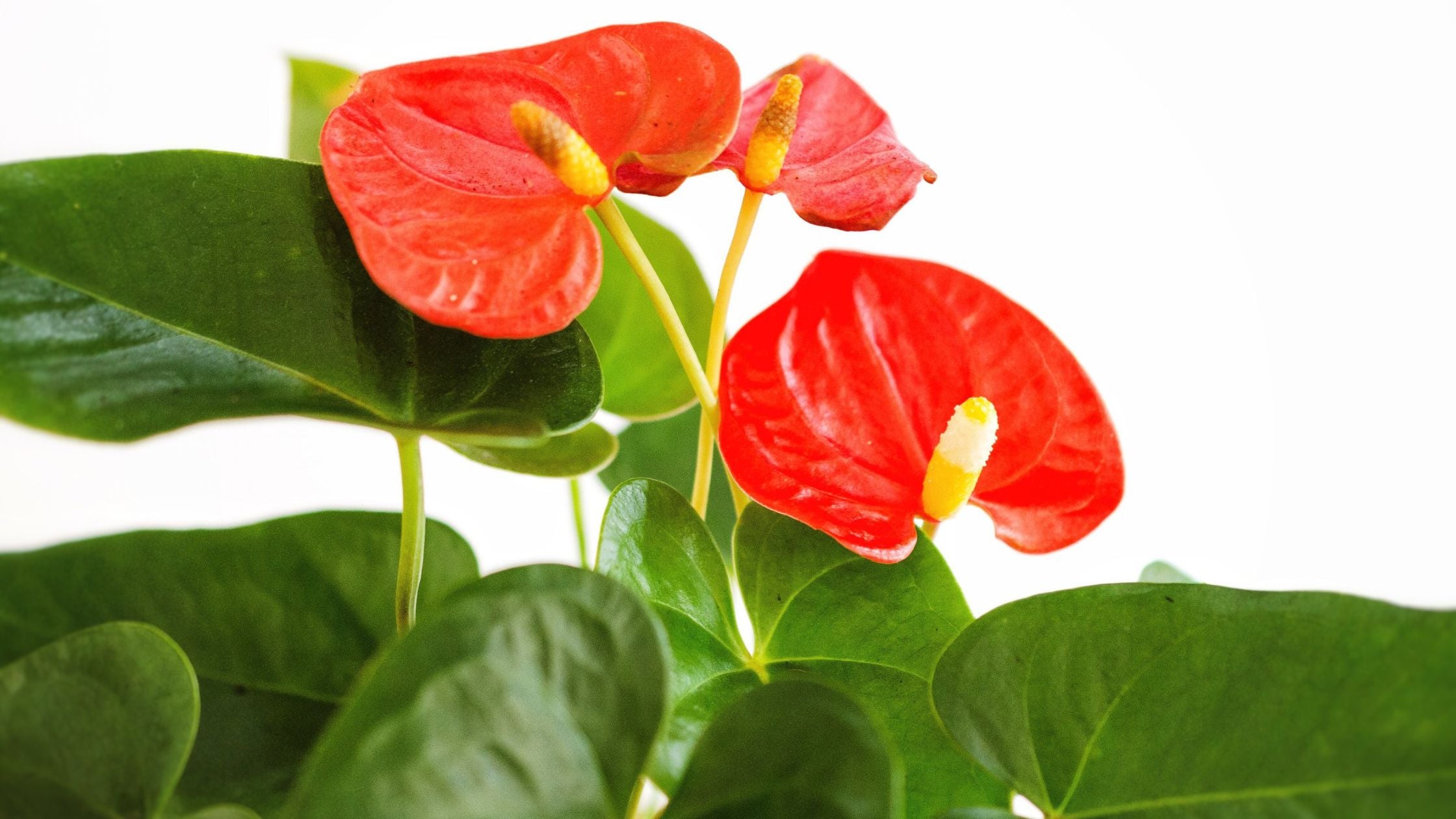
The Top 5 Anthurium Care Tips
Anthuriums are in a group called Aroids within the Araceae family. They are native to South America, Mexico and the Caribbean. Some are epiphytic plants living in trees in tropical rain forests while others live on the forest floor. Within the Anthurium genus some species/cultivars produce colorful ‘flowers’ while others are known for their distinctive leaf shape, size and unique veining. Aroids all share the same inflorescence (flower head). The spadix or spike - like central portion can be green, cream, red, or yellow and contains dozens of tiny flowers that are arranged in spirals up and down the length of the spadix. The shiny modified leaf that encloses the spadix is called the spathe. The spathe can vary in shape, color and size.
Other well-known Aroids are philodendrons, peace lilies, Chinese evergreens, dieffenbachia and alocasia.
The most common Anthurium species is the tough, slow-growing and colorful Anthurium andraeanum that we usually find in garden centres and florist shops. Their shiny, unique ‘blooms’ come in many different colors; shades of red, pink, white, purple, orange and green. These Anthuriums are exceptionally long blooming plants. Deadheading will encourage the plant to produce more blooms. The leaves are heart-shaped and a beautiful shiny green. You will never go wrong choosing an Anthurium for that special gift.
Many people collect rare Anthurium species/cultivars because of their unique leaf shapes, size, and distinctive veining patterns. The leaves of some Anthuriums change shape as they grow to maturity.
You will have the most success buying rare Anthuriums that are young and in smaller pots. They will acclimatize to your home much quicker than a more mature plant.
Common or rare, Anthuriums share many of the same cultural requirements. Some of the more rare species require a bit more work and special conditions to keep them happy.
To be successful at growing Anthuriums, follow the next five important cultural tips. If you are a beginner, I would choose varieties that are not only rare but the easiest of the rare to grow.
The three most important considerations when growing Anthuriums are light, temperature and humidity.
Light and Location
The common Anthurium or Anthurium andraeanum can be grown inside or outside in the summer in Saskatchewan. I grew one last year outdoors in semi-shade where it continuously bloomed. I placed it in dappled shade but they can also be grown in bright light with no direct sun. Indoors they need a bright location, warmth and extra humidity if possible.

The proper location inside for rare anthuriums is usually a bright light location with good air circulation, away from door and window drafts; especially in the winter. Direct sun is not recommended as this will burn the leaves. To encourage good air flow, provide a small fan in the room; pointed away from your plants.
Humidity and Temperature
Humidity is very important when growing rare Anthuriums.
The best air humidity is 70-80% but they can get by with a bit less. Do not let the humidity fall below 50% or you will eventually have brown leaf edges.
Run a warm mist humidifier with humidity control. Ideally a bright bathroom is the best location where they can benefit from the extra shower humidity. Occasionally put them in the shower – even the velvet leaf ones! This is a great way to remove dust or any lurking pests. The best room temps are between 21C to 32C.
Watering and Fertilization
Proper watering is the most important care tip to keep your Anthuriums happy. In Saskatchewan, your plants water needs will vary with the season. Keep the soil moist during the April to September growing season. To check, I recommend using the finger test – the growing media should feel barely moist. Of course, in winter, your plants will go for longer between watering. Use warm water – DO NOT USE ICE CUBES! Over watering will burn the edges of the leaves.
Fertilizing
Fertilize foliage Anthurium species during the growing season (April – September), once every 6-8 weeks with a water soluble tropical plant fertilizer mixed at ½ strength.
For flowering varieties use an orchid or water soluble indoor flowering plant fertilizer every 3-6 weeks during the spring and summer to promote blooming. Mix at ½ strength.
Over fertilization will also burn the leaves.
Do not fertilize during the winter.
Soil
Repot Anthuriums every two to three years. Repot when the roots are circling the surface of the potting mixture or circling the root ball when taken out of the pot. Do not trim the roots unless they are diseased or damaged.
Keep in mind that most Anthuriums are epiphytic plants. The roots need good airflow, so use an aroid mix or make your own. Using regular tropical soil as the only ingredient is not recommended as it will compact and suffocate the roots. Clay pots are the best pots for Anthuriums as clay will absorb excess moisture and allow air to pass through the root ball. Excellent drainage is also key. There are many aroid soil mixes with the following being a good recipe.
25% - medium orchid bark
25% - perlite
20% - coco coir
10% - activated charcoal
10% - worm castings
Propagation
Propagating Anthuriums should be done when repotting in spring. Repot when the roots are circling the surface of the potting mixture or circling the root ball. Do not trim the roots unless they are diseased or damaged.
Propagation is usually done by division. Divide the roots by gently pulling the root ball apart into pieces. Each section of root ball should have 2 leaves and healthy roots.
Commercial growers start Anthuriums mainly by tissue culture and sometimes by seed. The process of propagation by seed is in itself an interesting and challenging undertaking but certainly not impossible!
The following Anthurium species are only a very few on a very long list!
Anthurium villenaorum is an easy care plant that is native to Ecuador and Peru.
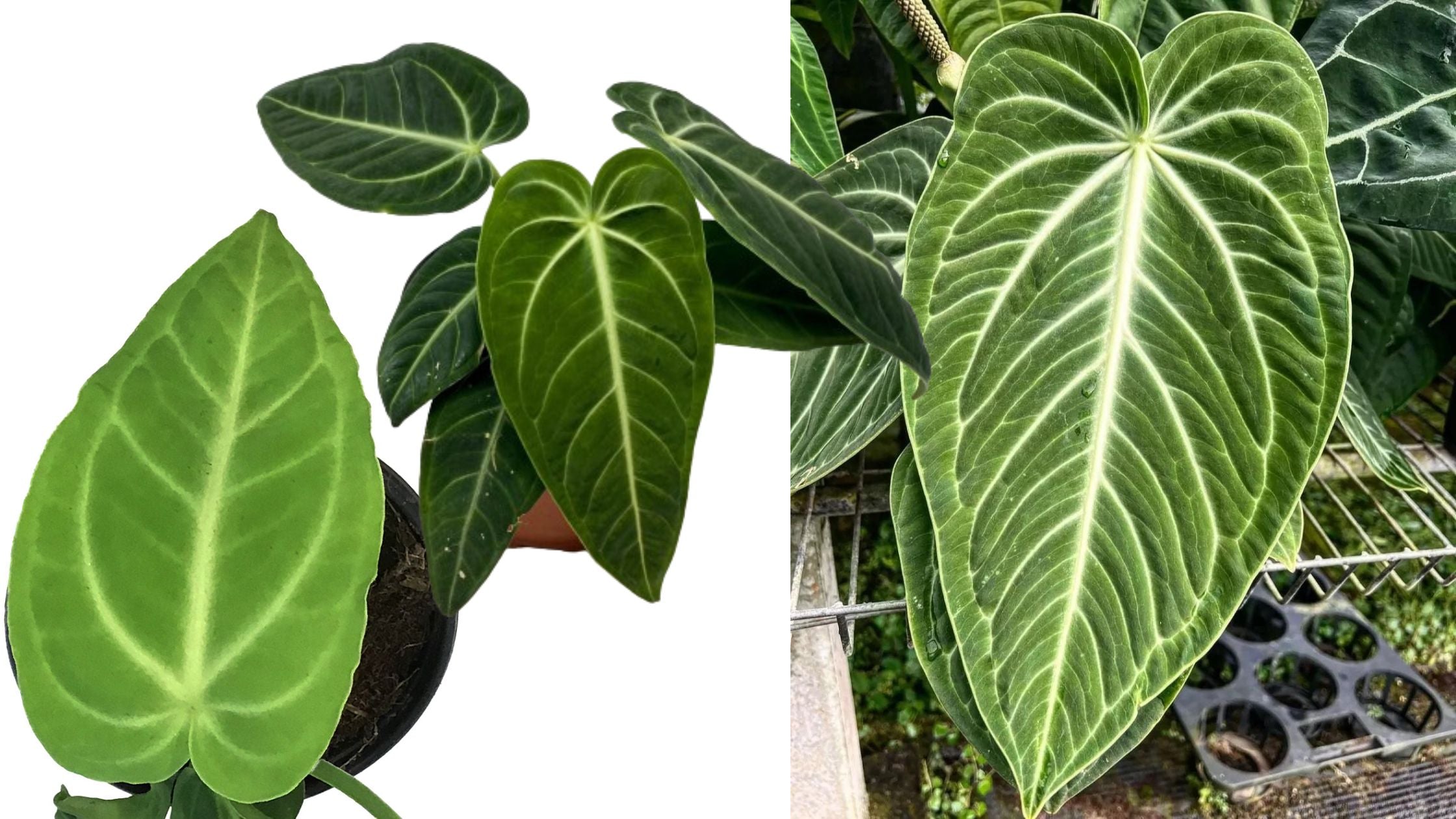
Height: 1.2 – 1.8 m Spread: 1.5 m
This Anthurium will bloom but is not showy. The leaves have a velvet textured surface that changes from light green when first emerging to a dark green when mature. The leaf veins are very distinct. In ideal growing conditions this plant can produce 75-90 cm leaves. It likes the humidity to be around 65% -70% with good airflow in the room. Let the top 2.5 cm of soil dry between watering.
Anthurium magnificum
Height: 1 m – 1.5 m Spread: 90 cm Native to Columbia
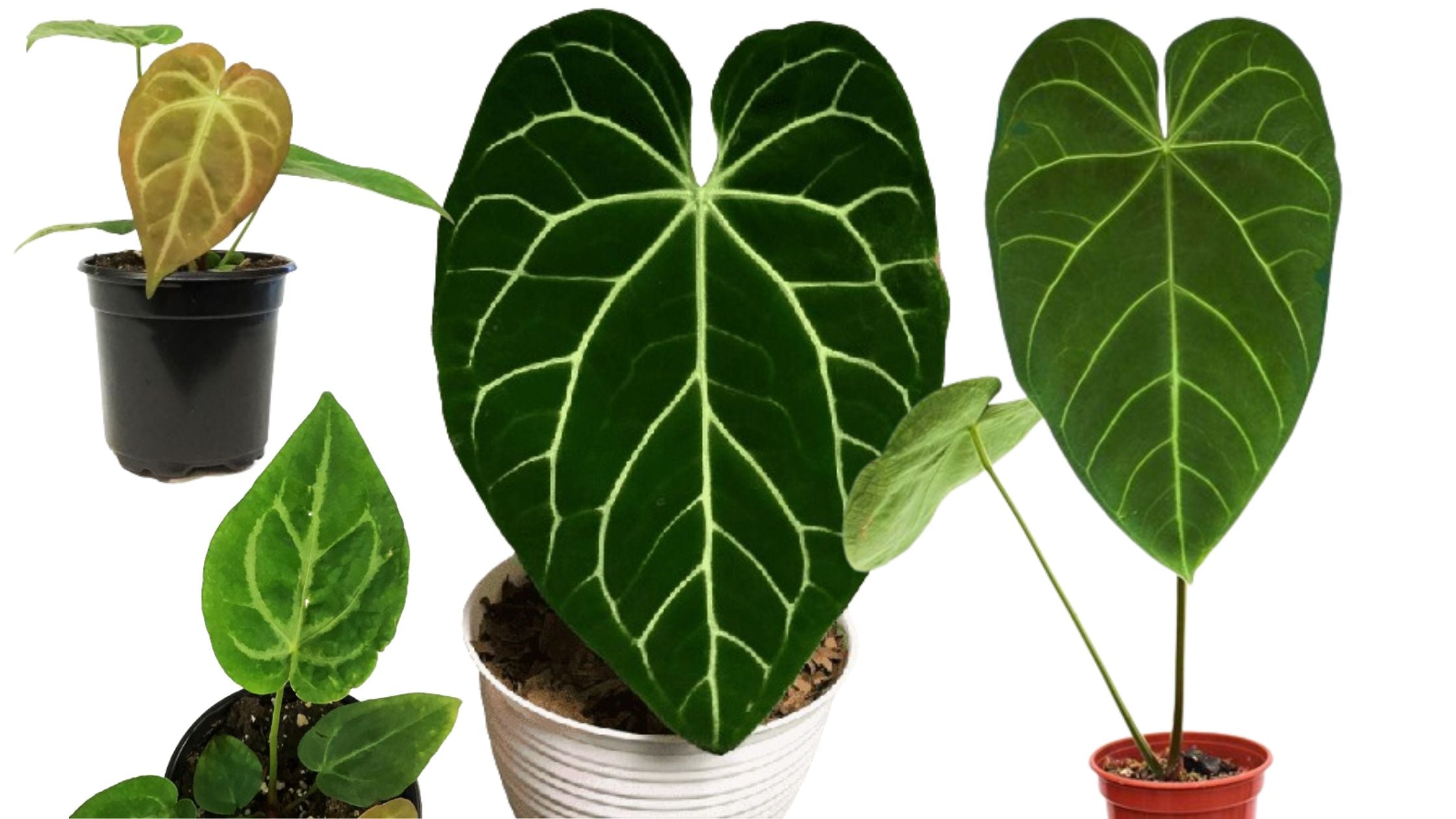
Anthurium magnificum is a dramatic velvety leaf epiphytic plant with 1 m mature heart -shaped leaves. New leaves are a reddish brown color that gradually becomes dark green with bright white veining. They like to be warm so a room temperature of 18 – 24 C or higher is ideal. Let the top 2.5 cm -5 cm of soil dry between watering. This plant has a strong root system which likes to be fertilized during the growing season – April to September. In winter Anthurium magnificum becomes dormant so there is no need to fertilize during this time. Provide a well anchored moss pole as this plant likes to climb. Repot every two to three years. If happy, this anthurium will produce green to white flowers throughout the year.
Anthurium ‘Pterodactyl”
Botanical Name: Anthurium clarinervium x pedatoradiatum
This is a hybrid Anthurium with both parents being native to Mexico.
Height: 90 cm to 1 m Spread: 90 cm
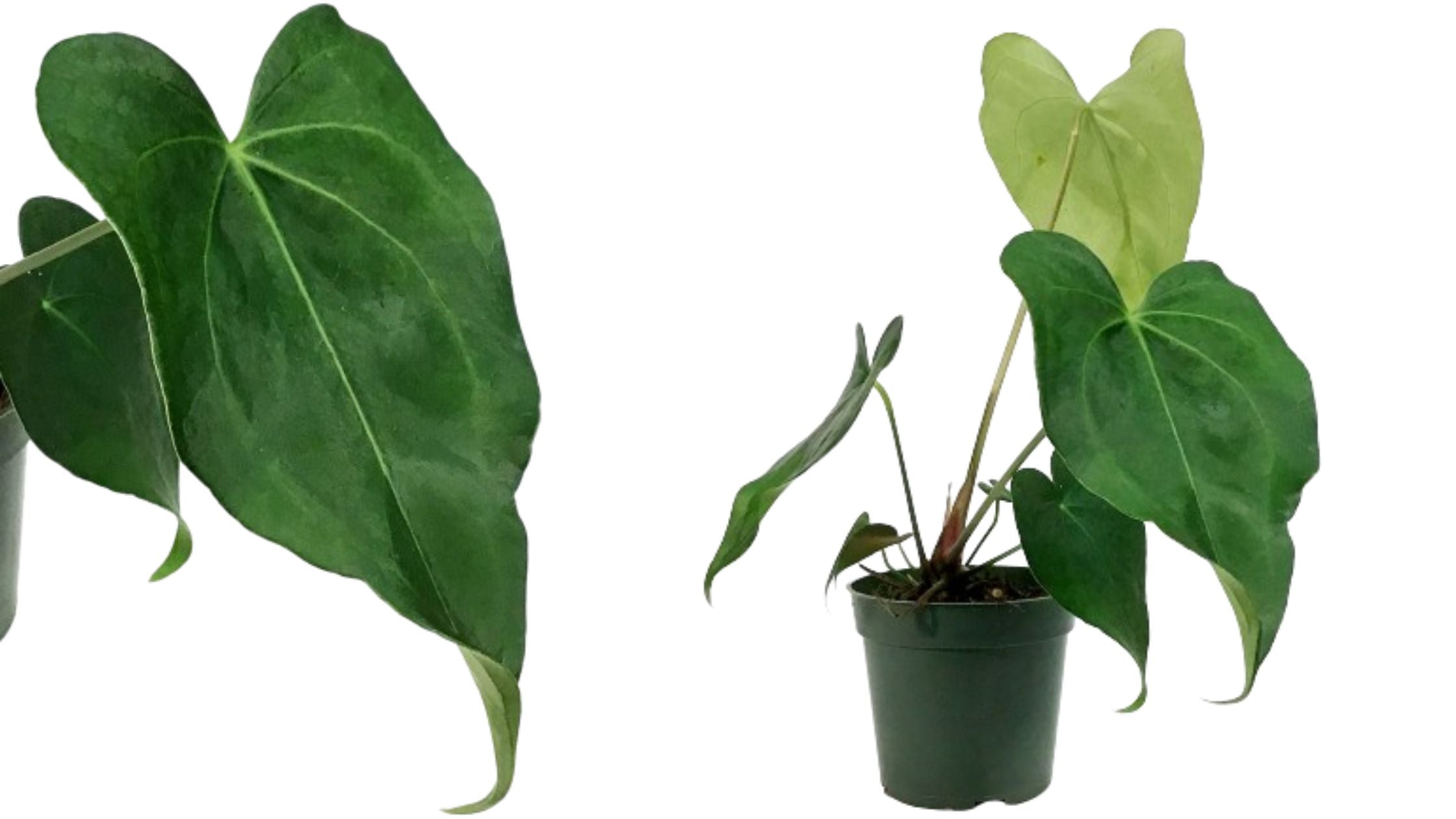
Flowers spring and summer in shades of pink, red and orange.
The new leaves are heart shaped and transform into a triangular, glossy green lobed shape that varies from plant to plant. Unfortunately it does not look very much like a Pterodactyl wing!
Pterodactyl likes to be in temperatures of 15 to 29 C. Water when the top of the soil has dried to a depth of 2.5 cm. It also like to be in a very humid environment of 70 to 80%.
Keep in mind that this Anthurium is very sensitive to temperature changes.
Anthurium hookeri ‘Variegated’ – Rare
A variegated form of Bird’s Nest Anthurium
This Anthurium is an epiphytic plant.
Native to St. Lucia to Northern South America.
Height: 1.2 m Spread: 1 m
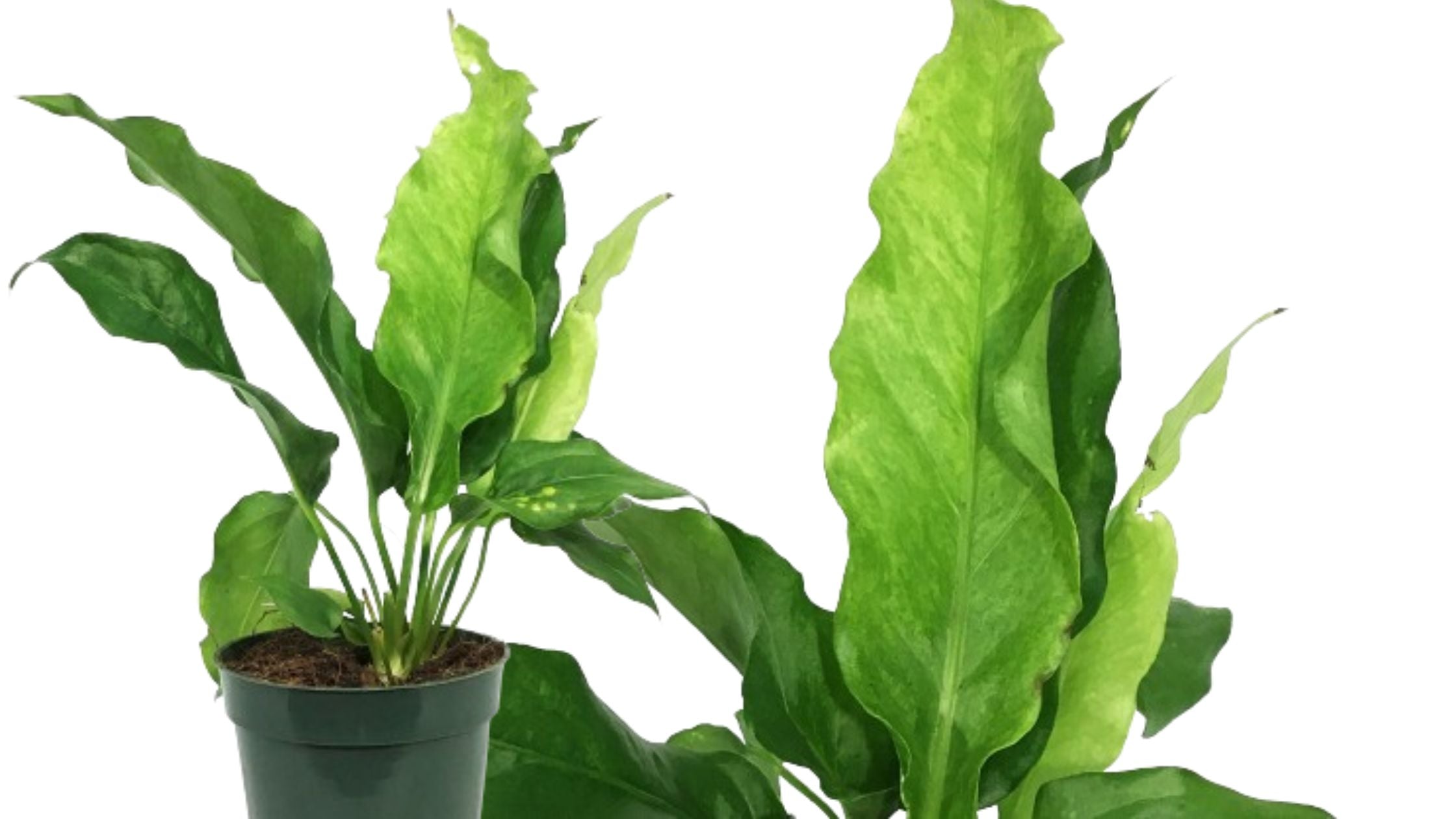
Upright, paddle-shaped 90 cm long leaves with wavy edges in a rosette growth pattern. Beautiful gold and green variegation. Make sure it has bright light to maintain variegation. ( No direct sun) Likes room temperatures of 18 C -29 C and humidity levels of 50% or higher. Water when the top 5 – 7.5 cm of the soil is dry. Repot in spring every one to two years.
Propagation is done by cuttings or tissue culture. Will not come true from seed.
All parts of an Anthurium plant are toxic to humans and pets. The sap may cause skin irritation.
